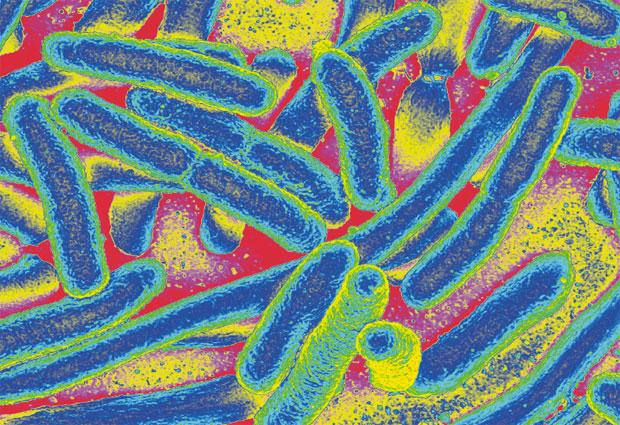It’s quite an alarming thought that antibiotic resistance is spreading worldwide, but it is. Thankfully, a group of EMBL researchers has developed a technique that helps them study the melting behavior of proteins, which in turn helps them better study bacteria.
The technique is called thermal proteome profiling (TPP). It was developed back in 2014 and enables scientists to compare the melting behavior of all the different proteins of a cell or organism before and after an event such as the administering of a drug. By changing TPP to work alongside bacteria, it can now be used to look at the activity and structure of proteins while they’re present in a live bacterial cell.
Where we as humans stop functioning when our bodies reach temperatures of 42 degrees Celsius and higher, bacteria such as E. coli, is just getting started. “We discovered that proteins in the middle of a bacterial cell are less tolerant to heat than those at the cell surface,” says Mikhail Savitski. “Surprisingly, a protein’s location is more predictive for its melting behavior than which other proteins it interacts with.”

With TPP, the researchers can also look at how different drugs affect bacteria. Those drugs that interact with the proteins in the body typically have higher melting points and work by increasing the protein’s heat tolerance. Therefore, by comparing the heat tolerance levels of untreated bacterial cells to treated bacterial cells the researchers can identify targets of antimicrobial drugs and figure out how the bacterial cells either gives in or tries to fight the drug.
“In one particular case, we were able to elucidate a novel drug resistance mechanism, “says Andre Mateus, lead author of the study and a postdoc working at EMBL. “Cells use proteins to pump antibiotics out of the cell. After genetically removing one such efflux pump from their chromosome, bacteria became more sensitive to many drugs but curiously more resistant to one specific antibiotic called aztreonam. Using TPP, we found that this was due to dramatically reduced levels of a specific porin – a protein that acts as a pore – used by aztreonam to enter the cell.”
Using TPP allows scientists to study the effects of perturbations much quicker than other techniques. Many of the insights obtained using this technique would be impossible to gain using conventional techniques, proving just how vital TPP is for studying bacteria in great detail.
More News to Read
- Neuroscientists Shed Light on the Role of Certain Genes Associated With Alzheimer’s
- Researchers Develop Synthetic T-Cells That are Almost an Exact Replica of Human T-Cells
- How You Can Make Treasure From Trash
- New Laser System Upgrade Allows Scientists to Explore Fusion Energy and Plasma Physics Like…
- Computer Scientists Create New Algorithm That’s Exponentially Faster Than Any We’ve Seen Before
